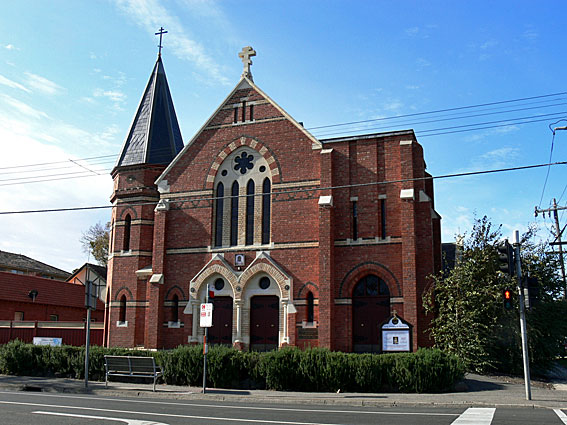
Holy Trinity St Nicholas Russian Catholic Church, East St Kilda: exterior
[photograph by John Maidment (25 May 2015)]

Holy Trinity St Nicholas Russian Catholic Church, East St Kilda: exterior
[photograph by John Maidment (25 May 2015)]
Historical and Technical Documentation by John Maidment
© OHTA (last updated May 2015)
The foundation stone of the church was laid on 28 October 1887 and the building opened for worship on 10 May 1888 as the Congregational Church, East St Kilda. Constructed in polychrome brick, with stone dressings, in a high Victorian Gothic style, it was designed by architects Hillson Beasley and John Little.1 The building replaced an earlier wooden church that had been located in Westbury Street and moved to the present site before the present church was constructed. Regrettably, funds were not available for the erection of the spire, apse and vestries. The building consists of a nave and transepts, the latter subdivided from the nave in 1940 to form a separate hall, an arrangement that continues to the present.
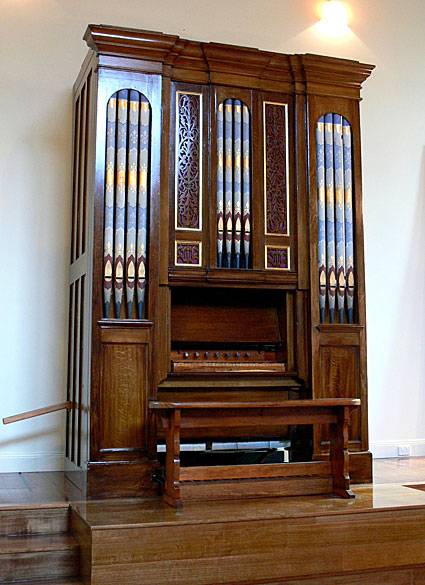
Holy Trinity St Nicholas Russian Catholic Church, corner Hotham & Inkerman Streets, East St Kilda: organ
[photograph by John Maidment (25 May 2015)]
The organ may be regarded as the earliest example of the work of George Fincham to remain almost entirely intact and would appear to date from around 1865-1870. Its original location is unknown, but it was conceived as a chamber organ and would have been located in a private residence. It would date from the earliest years of Fincham's career, incorporating recycled backfalls, script-engraved drawstops (a form not otherwise used by Fincham), a second single-rise reservoir located under the windchest, for optimum stability, and keyboard made by H. Brooks & Co. The brass nameplate survives and is identical with that on the organ now at Paton Memorial Uniting Church, Deepdene, dating from 1868. The casework is especially elegant with a five-section façade, prominent cornice, and two intricate fretwork panels between the three flats of four diapered dummy metal pipes – these replace earlier wooden dummies, with evidence of three pipes having been initially placed in the openings. The case front may have been recycled from an earlier organ as there is no relationship with the side panels. All of the metal pipework is of spotted metal.2
The organ was rented for 30 shillings per month from Fincham in 1885 and was purchased by the church at a reduced price of £85.00 in 1890.3 It had earlier been moved from the wooden church to the present building. When the building was subdivided in 1940, C.W. Andrewartha moved the organ, installed an electric blower and tremulant, and substituted for the original Trumpet 8ft from tenor C a wooden stopped Flute with pierced stoppers.4
With the disposal of the building by the Uniting Church, the organ was acquired by Michael Wu, of Healesville and was moved to his residence by Wakeley Pipe Organs Pty Ltd. The organ was fortuitously bought by the present custodians of the original building, Holy Trinity St Nicholas Russian Catholic Church, so that it could return to its earlier home. It has been placed in the hall section of the building on a raised platform where it can be used for concerts.
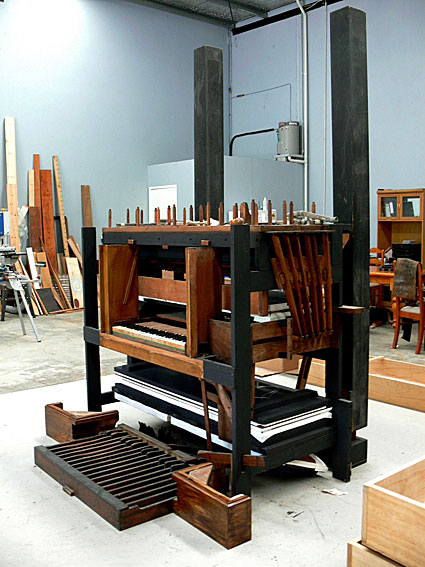
Holy Trinity St Nicholas Russian Catholic Church, corner Hotham & Inkerman Streets, East St Kilda:
organ undergoing restoration at workshop of Hargraves Pipe Organs Pty Ltd
[photograph by John Maidment (20 November 2014)]
Hargraves Pipe Organs Pty Ltd has given the instrument a thorough but conservative restoration. This has included releathering of the two reservoirs and feeders for hand blowing (with manufacture of a new blowing lever, the original having been removed in 1940), overhauling of the key and stop actions, repair of the windchest and wooden pipework, some of which had been affected by rodent damage and restoration work on the casework and damaged fretwork panels, which have been backed with cloth.
| MANUAL Open Diapason Stop Diapason Clarabella Principal Fifteenth Trumpet Pedal coupler PEDAL [Bourdon] |
[8] [8] [8] [4] [2] [8] [16] |
(all enclosed) 1-12 open wood placed outside swell box CC-BB TC TC replaced 1940 with Flute 4 12 notes permanently on |
Compass: 56/29
Lever swell pedal
2 composition pedals
Mechanical key and stop action5
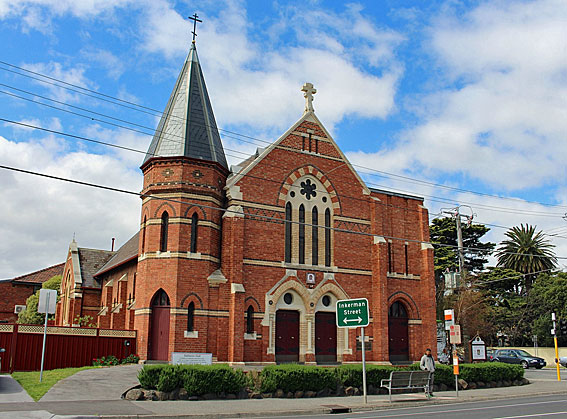
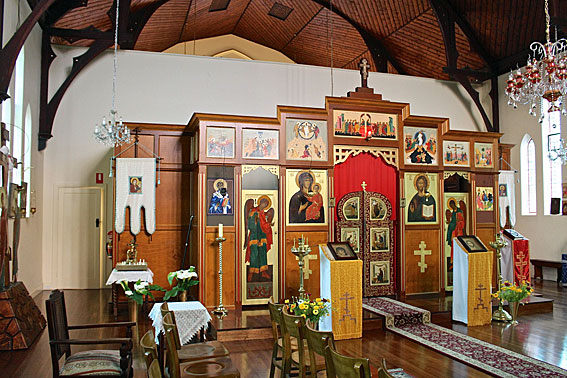
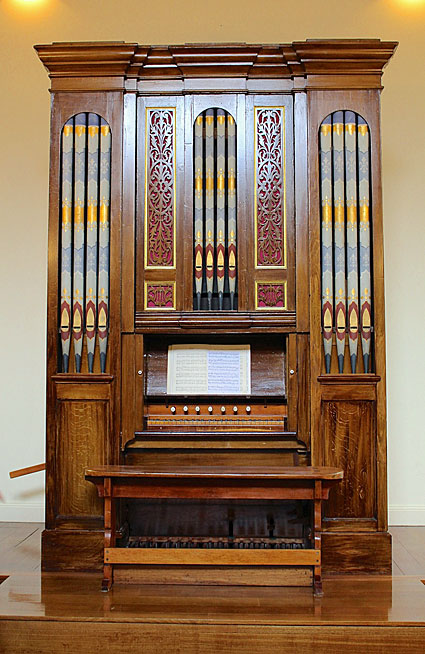
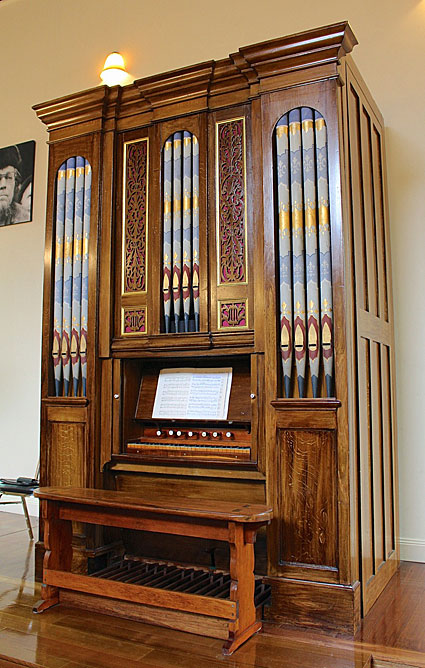
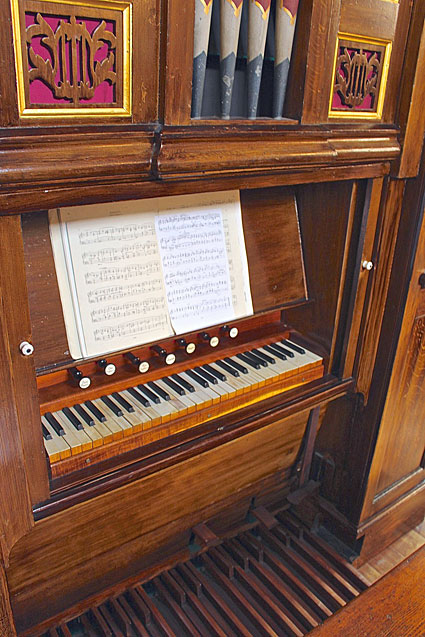
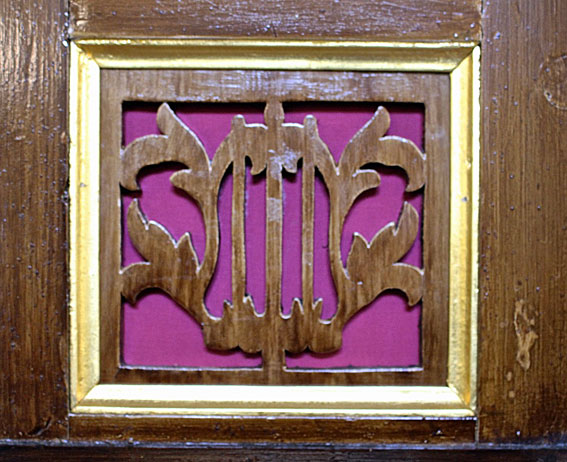
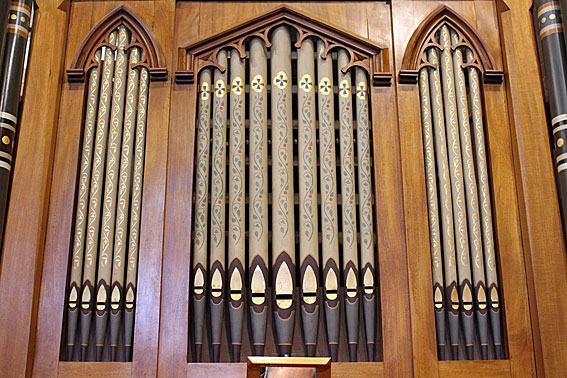
Photos: Trevor Bunning (September 2017)
1 http://www.skhs.org.au/SKHSchurches/East%20St%20Kilda%20Uniting%20Church.htm accessed 30 November 2014; Victorian Churches, Miles Lewis, editor. Melbourne: National Trust of Australia (Victoria), 1991, p.85.
2 Observations by John Maidment
3 E.N. Matthews, Colonial Organs and Organbuilders (Carlton: Melbourne University Press, 1969), p.149
4 Noted by John Maidment; date advised by organist at church G. Whelan c.1966
5 Specification and other details noted John Maidment November 2014 during a visit to the workshop of Hargraves Pipe Organs Pty Ltd
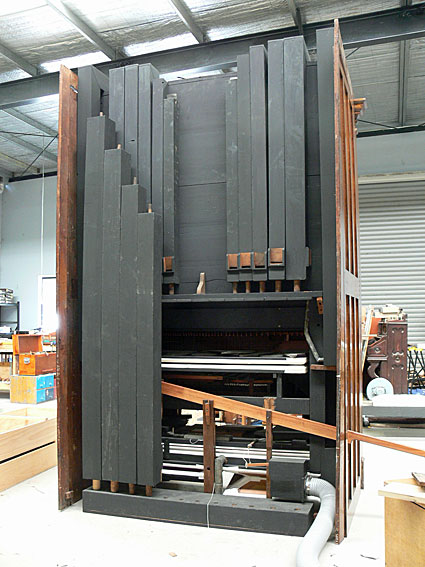
Holy Trinity St Nicholas Russian Catholic Church, corner Hotham & Inkerman Streets, East St Kilda:
organ showing mechanism, windchest and reservoirs
[photograph by John Maidment (18 March 2015)]
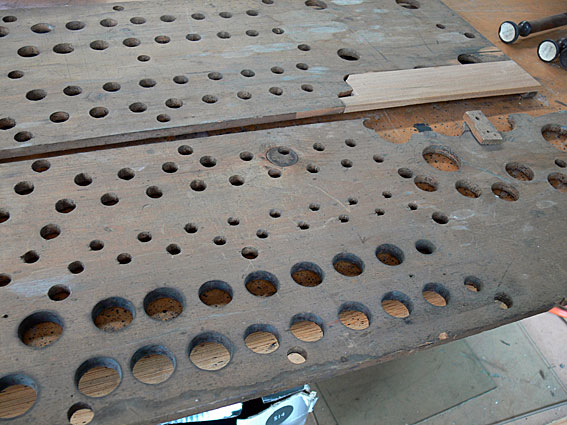
Holy Trinity St Nicholas Russian Catholic Church, corner Hotham & Inkerman Streets, East St Kilda:
organ showing rackboards and holes for the original Tenor C Trumpet 8
[photograph by John Maidment (20 November 2014)]
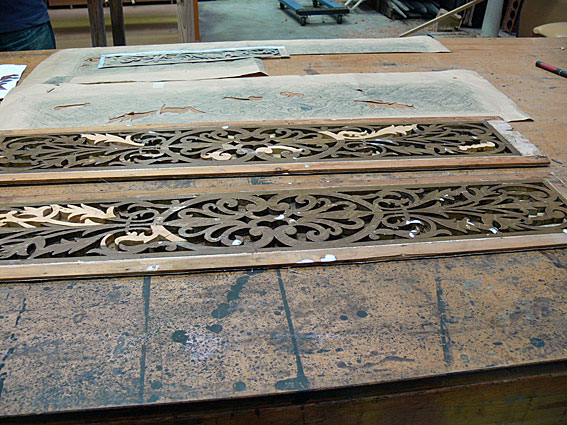
Holy Trinity St Nicholas Russian Catholic Church, corner Hotham & Inkerman Streets, East St Kilda:
organ showing repairs to the fretwork panels
[photograph by John Maidment (18 March 2015)]
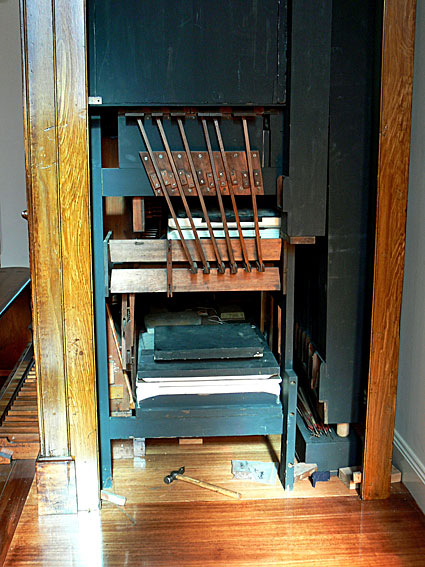
Holy Trinity St Nicholas Russian Catholic Church, corner Hotham & Inkerman Streets, East St Kilda:
organ – side view from C# side showing stop action and reservoirs
[photograph by John Maidment (25 May 2015)]